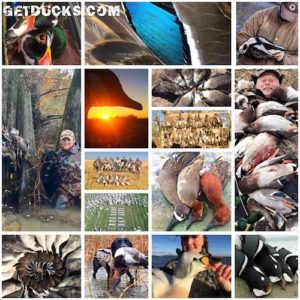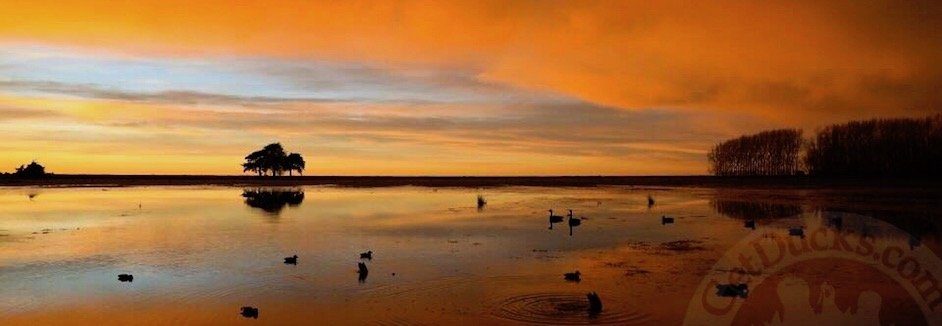North American Waterfowl Species
 The North America Waterfowl Slam, the definitive North American Species List. It’s not a contest. It’s a personal quest. A way of life, really.
The North America Waterfowl Slam, the definitive North American Species List. It’s not a contest. It’s a personal quest. A way of life, really.
The typical The North American Waterfowl Slam suggests 41 waterfowl species to include ducks, geese and swans (and crane). But what’s the real number?
To include Emperor geese (available to Alaska residents in 2017 and, by draw permits to Alaska non-residents in 2018) brings the number to 42. Notably differentiated subspecies of common eider, swans and brant, are readily huntable but absent from popular North American waterfowl species slams-lists that nonetheless include the blue color-phase of snow geese, which differ in color only. Why not include inter-grades, too, if that’s the case? And sandhill cranes are not even waterfowl – why not include coots and rails?! As for drawing a hard line in the mud, there are still a few old-timers around that can tell stories of having hunted during the halcyon days of waterfowl hunting throughout North America when Stellar’s eiders and spectacled eiders were still legally hunted.
“There are no fences in the sky,” a long-time friend and respected mentor once said. Your own North American waterfowl species list may grow longer to include vagrant visitors to the United States, such as Eurasian wigeons, Eurasian teal, or pink-footed geese. Blue-phased Ross’ geese and blue-phased greater snow geese are not as prevalent as blue-phased lesser snow geese but exist. A European vagrant species might streak over your decoys one day. Breaking out the bafflingly various races of Canada and cackling geese will keep die-hards busy forever. The truth of the matter is that these waterfowl-slam lists never really end. After completing your North American Waterfowl Slam of North American waterfowl species, are you going to quit and instead play golf? There are 5 more continents to go (see our growing Waterfowl of the World page)! Chasing the World Waterfowl Slam takes everything you love about hunting waterfowl to a whole ‘nuther level.
My personal GetDucks.com North American waterfowl species slam list encompasses considerably more than 41 waterfowl species to include important subspecies you’ll encounter with travel. North America’s indigenous waterfowl species are listed below for your consideration. Personal go-to references are primarily Ducks, Geese and Swans of North American (Bellrose, 1980) and Waterfowl: An Identification Guide to the Ducks, Geese and Swans of the World (Madge and Burn, 1988). They’re both dated but excellent waterfowl species resources. There are plenty of good, updated resources are available online and in print.
Waterfowl migrate and many of us hunters follow. Because the world is way bigger than our own backyard. For many of us the reward is the experience; new waterfowl species are simply a by-product of the chase. Brant and eider hunting methods on the Atlantic and Pacific coasts are similar, but environmental backdrops differ drastically. The birds are unique, too. Ramsey Russell’s GetDucks.com North American Waterfowl Species List represents the most complete North America Waterfowl Slam list. But it’s your quest. Adjust your personal goals as necessary or desired.
NORTH AMERICAN WATERFOWL SPECIES LIST (FOR
NORTH AMERICA WATERFOWL SLAM)
DABBLING & WHISTLING DUCKS
American Black Duck (Anas rubripes)
American Wigeon (Mareca americana) [formerly Anas americana]
Blue-winged Teal (Spatula discors) [formerly Anas discors]
Cinnamon Teal (Spatula cyanoptera) [formerly Anas cyanoptera]
Gadwall (Mareca strepera) [formerly Anas strepera]
Green-winged Teal (Anas crecca)
Florida Mottled Duck (A. fulvigula fulvigula)
Gulf Coastal Mottled Duck (A. fulvigula maculosa)
Northern Shoveler (Spatula clypeata) [formerly Anas clypeata]
Whistling Duck, Black-bellied (Dendrocygna autumnalis)
Whistling Duck, Fulvous (Dendrocygna bicolor)
DIVER DUCKS & MERGANSERS
Canvasback (Aythya valisineria)
Ring-necked Duck (Athya collaris)
Common Goldeneye (Bucephala clangula)
Barrow’s Goldeneye (Bucephala islandica)
Bufflehead (Bucephala albeola)
Ruddy Duck (Oxyura jamaicensis)
Hooded Merganser (Lophodytes cucullatus)
Common Merganser (Mergus mergansus)
Red-breasted Merganser (Mergus serrator)
SEA DUCKS
King Eider (Sometaria spectabilis)
Common Eider (Somertaria mollissima)
Atlantic Common Eider (S. m. dresseri)
Pacific Common Eider (S. m. v-nigra)
Northern Common Eider (S. m. borealis)
Hudson Bay Common Eider (S. m. sedentaria)
Spectacled Eider (Somateria fischeri) PROTECTED STATUS [USFWS Fact Sheet]
Stellar’s Eider (Polysticta stelleri) PROTECTED STATUS [USFWS Fact Sheet]
Harlequin Duck (Histrionicus histrionicus)
Long-tailed Duck (Clangula hyemalis)
Black Scoter (Melanitta nigra)
Surf Scoter (Melanitta perspicilatta)
White-winged Scoter (Melanitta deglandi)
GEESE & SWANS
Greater White-fronted Goose (Anser albifrons [gambelli, frontalis, or sponsa])
Tule Goose (Anser albifrons elgasi)
Snow Goose (Chen caerulescens) and/or Blue-phased Snow Goose (Chen caerulescens)
Lesser Snow Goose (C. c. caerulescens)
Greater Snow Goose (C. c. atlanticus)
Canada Goose (Branta canadensis) [7 sub-species]
Atlantic Canada Goose (B. c. canadensis)
Interior Canada Goose (B. c. interior)
Giant Canada Goose (B. c. maxima)
Lesser Canada Goose (B. c. parvipes)
Western Canada Goose (B. c. moffitti)
Dusky Canada Goose (B. c. occidentalis)
Vancouver Canada Goose (B. c. fulva)
Cackling Goose (Branta hutchinsii) [4 sub-species]
Cackling Canada Goose (B. h. minima)
Aleutian Canada Goose (B. h. luecopareia)
Taverner’s Canada Goose (B. h. taverneri)
Richardson’s Canada Goose (B. h. hutchinsii)
Brant Goose (Branta bernicula)
Pacific Black Brant (B. b. nigricans)
“For over 50 years, Safari Club International has been foremost in defending hunting rights and wildlife conservation in North America and beyond. For this reason alone, I fully support SCI. As subchain of the new SCI Game Birds of the World Awards Platform (details below), I personally invite you to join. By enrolling your North America Waterfowl Slam at SCI, you are giving back, further ensuring a continuation of traditional hunting and wildlife conservation for future generations. What other waterfowl hunters awards platform can say that?”
– Ramsey Russell, GetDucks
SCI Gamebirds of the World Awards Platform Opens Exciting New Frontiers for North America Waterfowl Slam Collectors
 Backdropped by the mountainous game room displaying world sheep slams and other lifetime accomplishments from hunting big game worldwide, devoted Safari Club International member Shaun Harris explains, “I’ve always loved hunting ducks and upland birds, but there’s something about their subtle beauty—about their dazzling colors, especially—that add another whole dimension to this room where I’m reminded of some of the happiest times of my life. And a lot of hunters don’t even realize that gamebirds can be hunted nearly anywhere worldwide that big game are hunted.” The world truly is a whole lot bigger than our own back yards, abounding with dizzying arrays of ducks, geese, swans and upland gamebirds. In fact, there are 6 whole continents worth of opportunity!
Backdropped by the mountainous game room displaying world sheep slams and other lifetime accomplishments from hunting big game worldwide, devoted Safari Club International member Shaun Harris explains, “I’ve always loved hunting ducks and upland birds, but there’s something about their subtle beauty—about their dazzling colors, especially—that add another whole dimension to this room where I’m reminded of some of the happiest times of my life. And a lot of hunters don’t even realize that gamebirds can be hunted nearly anywhere worldwide that big game are hunted.” The world truly is a whole lot bigger than our own back yards, abounding with dizzying arrays of ducks, geese, swans and upland gamebirds. In fact, there are 6 whole continents worth of opportunity!
North America has the most incredibly diverse and robust waterfowl populations on earth. The North America Waterfowl Slam (SCI North America Gamebirds of the World Award list) is most impressive.
Water runs downhill, collecting in low-lying wetlands. For that reason alone, waterfowl are most oftentimes hunted worldwide at or even below sea level. But that’s where things get fun—based on a 100-plus species’ varied life histories, chasing them takes hunters to open seas and rocky shorelines, fast-moving rivers and tranquil marshlands, all points in between. Great needle-in-a-haystack example of fully immersing oneself into a landscape while toting a shotgun and wearing waders is hunting African pygmy geese. In an otherwise arid, South Africa landscape, they’re hunted in lily pad-covered wetlands. Talk about fresh perspective! And there are exceptions to the low-lying areas rule, too—such as the unique ducks and geese inhabiting high-altitude, altiplano wetlands among the Andes Mountains.
As if waterfowl weren’t enough to keep us busy, there are 100-plus more upland birds. While hunters may have since progressed up hunting’s food chain, most youthful hunting introductions likely involved swinging hand-me-down scatterguns at doves under the watchful eyes of their ancestors or stumbling headlong through cover behind setters that behaved way differently with noses full of birds than when they’d been asleep under the kitchen table the previous night. To later learn there’s a world full of such gamebirds can be eye-opening. And inspiring. Stalking capercaillie in boreal forest environments so quiet that breath can be heard crystallizing, watching driven guineafowl hurling towards the shooting line like black-with-white-polka-dotted cannonballs, seeing ruffed grouse fading from peripheral vision more quickly than a shotgun can be shouldered embodies addictive explorations of new feathered frontiers seeped in deep-rooted upbringings.
SCI’s Gamebirds of the World Awards Platform is a relatively new, standalone platform not intermixed with existing Big Game Species Awards. It will increasingly bring needed attention to bird hunting opportunities and conservation. Registration is as simple as completing a photo entry form and submitting a grip-and-grin photo showing distinguishing feather characteristics of your prized gamebird.
Safari Club International has been the world’s foremost advocate of hunting and wildlife conservation for over 50 years, but the new gamebirds platform opens important new frontiers. For longtime SCI members that have completed their big game quests or are looking for new adventures to complement their big game hunts, hunting gamebirds will be like finding religion. Importantly, expanding our renowned record book program to include waterfowl and upland gamebirds will potentially attract a newer generation of hunters that are passionate about what SCI represents. And this comes at a time that the stakes have never been higher.
SCI Game Birds of the World Species List
Below are the acceptable bird species to date:
Game Birds of the World Species List
North America Waterfowl Slam (SCI North America Game Birds of the World) Awards
South America Waterfowl Slam (SCI South America Game Birds of the World) Awards
Africa Waterfowl Slam (SCI Africa Game Birds of the World) Awards
SCI Game Birds of the World Photo Entry Forms







